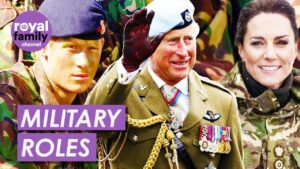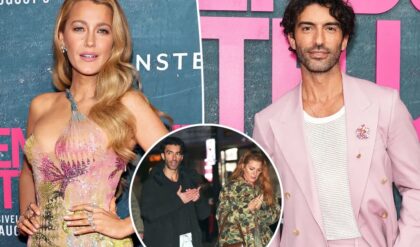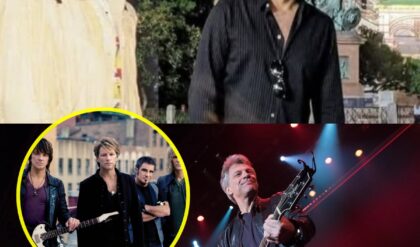The Surprising Military Careers of the Royal Family: Service, Duty, and Sacrifice
The British Royal Family is often seen as a symbol of tradition, glamour, and unshakable duty, but beyond the glittering crowns and grand palaces lies a deeply ingrained tradition of military service. Over the centuries, many members of the Royal Family have donned uniforms, trained rigorously, and, in some cases, even served on the front lines. This commitment to military service reflects not just a sense of personal duty but also a desire to connect with the people they represent and uphold the values of honor, courage, and sacrifice. Here’s a look at the surprising military careers of some of the most notable members of the Royal Family.

1. King Charles III: The Naval Pilot
Before ascending to the throne, King Charles III had a notable military career that began in the Royal Navy. After attending the Royal Air Force College Cranwell, Charles trained as a jet pilot before switching to the Royal Navy, where he served on the HMS Norfolk, a frigate that patrolled the seas during the early 1970s. King Charles also qualified as a helicopter pilot and joined the 845 Naval Air Squadron, flying Wessex helicopters. His time in the Navy not only solidified his understanding of military life but also prepared him for
Despite his royal status, Charles was known for immersing himself in the everyday routines of military life, which helped him connect more deeply with servicemen and women. His experiences shaped his perspective on duty, leadership, and the challenges faced by those in uniform, which he often referenced in his speeches and charitable work.
2. Prince William: The Search and Rescue Pilot
Prince William, now the Prince of Wales, has often been lauded for his down-to-earth approach and commitment to public service, traits that were honed during his time in the military. After graduating from the Royal Military Academy Sandhurst, William joined the Household Cavalry as a second lieutenant before transferring to the Royal Air Force (RAF).
It was in the RAF where William found his calling as a search and rescue helicopter pilot. Flying Sea King helicopters, he was stationed at RAF Valley in Wales, where he participated in numerous life-saving missions, often in treacherous weather conditions. His role in search and rescue missions earned him immense respect from his peers and the public alike. Prince William’s military career wasn’t just about serving his country; it was also about serving the people, a trait that continues to define his royal duties today.
3. Prince Harry: The Frontline Soldier
Perhaps no modern royal has had a more hands-on military experience than Prince Harry, Duke of Sussex. Driven by a deep sense of duty and a desire to prove himself, Harry joined the Royal Military Academy Sandhurst in 2005. He served with the Blues and Royals and later trained as a helicopter pilot, eventually becoming an Apache pilot.
What truly sets Harry apart, however, is his two tours of duty in Afghanistan. During his time on the front lines, Harry was known simply as “Captain Wales” and served alongside his fellow soldiers without any special treatment. His experiences in Afghanistan deeply affected him, exposing him to the harsh realities of war and the sacrifices made by service members.
After leaving active service, Harry continued to support veterans and military personnel through initiatives like the Invictus Games, an international sporting event for wounded, injured, and sick service members. His commitment to the military community remains one of the cornerstones of his public work.
4. Prince Philip: The Naval Hero
The late Prince Philip, Duke of Edinburgh, was a decorated naval officer who served with distinction during World War II. His military career began at the Royal Naval College, Dartmouth, where he excelled as a cadet and quickly rose through the ranks. Philip served on various ships during the war, including HMS Valiant, where he saw action in the Mediterranean and was praised for his bravery during the Battle of Cape Matapan.
Philip’s naval career was marked by his unwavering dedication to duty and his ability to lead under pressure, traits that would define his role as consort to Queen Elizabeth II. Even after his active military service ended, Philip remained closely connected to the armed forces, holding numerous honorary military titles and supporting countless military charities.
5. Queen Elizabeth II: The Wartime Mechanic
Though not traditionally seen as a military figure, the late Queen Elizabeth II made history during World War II as the first female member of the Royal Family to serve in the armed forces. As a young princess, Elizabeth joined the Auxiliary Territorial Service (ATS) at the age of 18, where she trained as a mechanic and military truck driver. She learned how to repair engines and operate heavy vehicles, skills that were not only groundbreaking for a royal at the time but also demonstrated her determination to contribute to the war effort.
Elizabeth’s military service, though brief, was a formative experience that shaped her lifelong commitment to public service and duty. Her hands-on approach and willingness to step into a traditionally male role during a time of national crisis endeared her to the British public and solidified her image as a monarch dedicated to her country.
While Princess Anne, the Princess Royal, never served in active combat, she has been deeply involved in supporting the armed forces through her numerous honorary military roles. Known for her no-nonsense approach and tireless work ethic, Anne holds several honorary titles, including Admiral of the Royal Navy and General of the British Army.
Princess Anne frequently visits military bases, supports veterans’ charities, and attends countless ceremonial duties, reinforcing the Royal Family’s close ties to the armed forces. Her commitment to the military community highlights the broader role that royals play in supporting and honoring those who serve.
The Legacy of Military Service in the Royal Family
The military careers of the Royal Family members are more than just ceremonial; they reflect a deep-seated tradition of service, sacrifice, and leadership. From the front lines of battle to the flight decks of search and rescue missions, these royals have shown that their commitment to their country goes beyond royal duties and titles. Their military experiences have not only shaped their personal characters but have also brought them closer to the public they serve.
This legacy of military service continues to influence the Royal Family’s public work, reminding the world that, beyond the pomp and pageantry, there is a profound commitment to duty, honor, and country.





